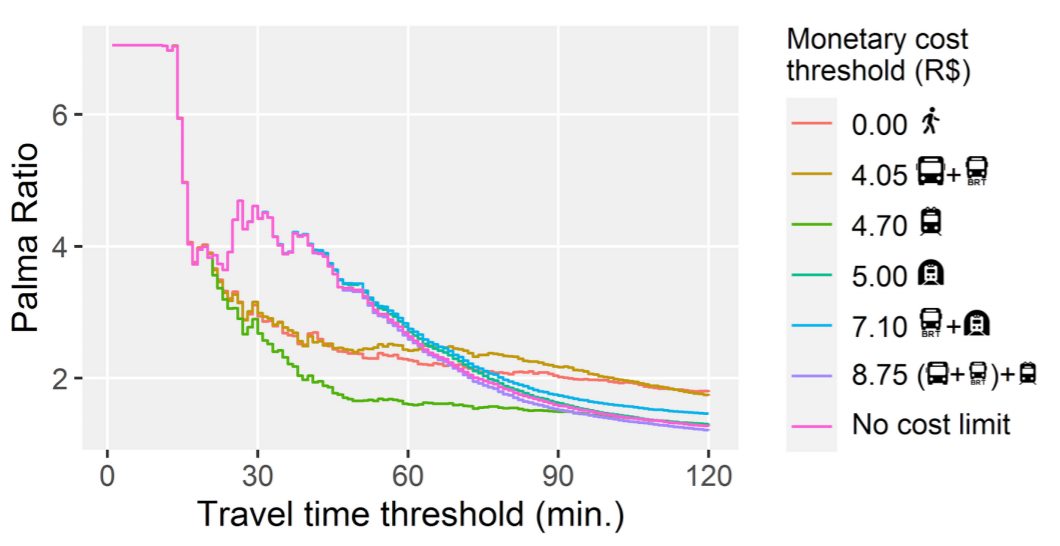The impact of public transport monetary costs on transportation equity
We have a new study preprint looking at “The impact of transit monetary costs on transport equity analyses”. The manuscript is currently under review, but one can already read/cite it from OSF Preprints. The paper was led by Daniel Herszenhut (Twitter: @dhersz), who has been doing some great work in his master’s thesis and in the Access to Opportunities Project.
TL;DR: Most studies in the transport equity / accessibility literature only look at travel time restrictions. This implicitly holds the unrealistic assumption that all individuals equally face no transport budget constraints. In this study we show how simultaneously incorporating both travel time and monetary costs into accessibility measurement can significantly skew the conclusions of transportation equity analyses in a non-trivial manner. Although ignoring monetary costs leads to overestimated accessibility levels, it can either overestimate or underestimate inequality levels depending on the combination of temporal and monetary restrictions considered in the analysis and the spatial configuration of cities and transport networks.
- Herszenhut, D., Pereira, R. H. M., da Silva Portugal, L., & de Sousa Oliveira, M. H. (2021, July 14). The impact of transit monetary costs on transport equity analyses. https://doi.org/10.31219/osf.io/e3tac
Abstract:
Transport equity analyses are often informed by accessibility estimates based solely on travel time impedance, ignoring other elements that might hinder access to activities, such as the monetary cost of a trip. This paper examines how and to what extent simultaneously incorporating both time and monetary costs into accessibility measures may impact transport equity assessment. We calculate job accessibility by transit in the city of Rio de Janeiro, Brazil, using cumulative opportunity measures under distinct combinations of temporal and monetary thresholds, and compare how inequality levels vary across different scenarios. We find that the most common research practice of disregarding monetary costs tends to overestimate accessibility levels. However, stricter monetary constraints do not necessarily result in less equitable scenarios. How accessibility inequality is affected by monetary costs is highly dependent on what combinations of temporal and monetary cut-offs are considered in the analysis. In the case of Rio, opting for lower monetary thresholds when looking at shorter trips leads to inequality levels lower than those found in the no monetary threshold scenario, but results in higher inequality levels when allowing for longer trips. We find that the impact of monetary costs on transport equity analyses depend on a complex interaction between fare policies, the spatial organisation and operational characteristics of transit systems, and the spatial co-distribution of jobs and residential locations. The paper thus highlights that conclusions and policy recommendations derived from transport equity analyses can be affected in non-intuitive ways by the interplay between temporal and monetary constraints. Future research should investigate how different combinations of travel time and monetary costs thresholds affect equity analyses in different contexts.
How accessibility inequality between the wealthy and the poor vary considering different monetary cost and travel time thresholds. Rio de Janeiro, 2018.
